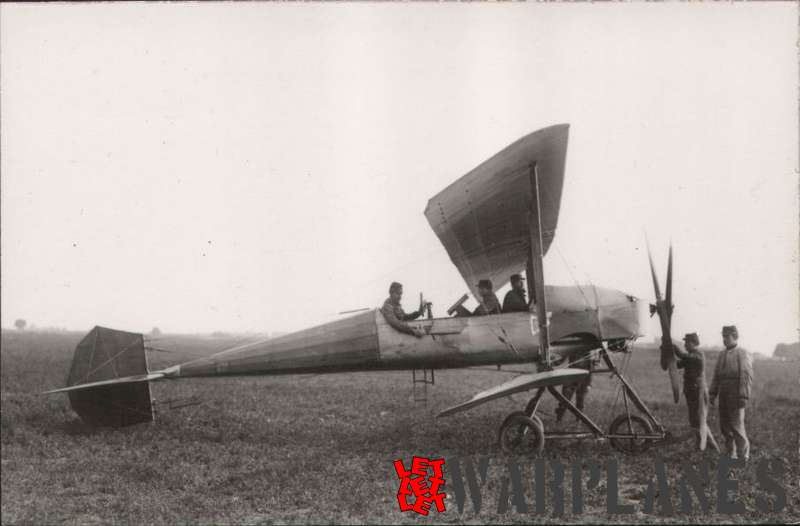Breguet G.3
The Breguet Types III, IV, and V were a family of early biplanes built by Louis Breguet in France between 1910 and 1912. The Breguet 3 was introduced in the spring of 1910 and by early June at least six samples of thy type has been built. Its standard tail control, tractor biplane design appealed to sporting pilots and was immediate commercial success. A Type IV achieved fame in August 1910 as being the first aircraft to lift six people. This family also included the first machines that Breguet was able to sell to the French military, after arranging a series of demonstrations for the Army. In 1911, a Type III named “Breguet du Maroc” became the first heavier-than-air aircraft to fly in the French colonies, with Henri Brégi making a flight from Casablanca to Fes. Embrassed by the crisis in morocco, Louis Breguet placed his pilot and a Canton-Unne, 7 cylinder 85HP Breguet 3 biplane at the disposal of the military.

Breguet G.3 was main production version and it was 8,75 m long, wing span 13,65 m, power by one 100HP Gnome. Maximum speed was 110 km/h. French Air Force operated 32 aircraft of Type G3, Italian Air Force operated 3 aircraft of Type G3, Swedish Air Force operated 1 aircraft of Type G3, Royal Flying Corps operated 5 aircraft of Type G3.
Srecko Bradic





